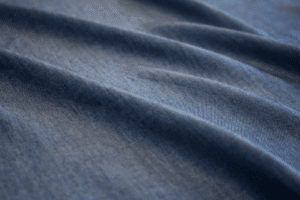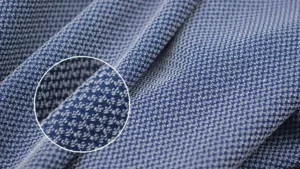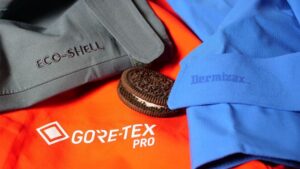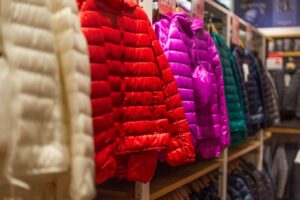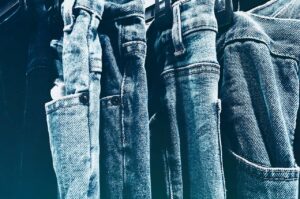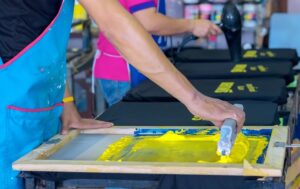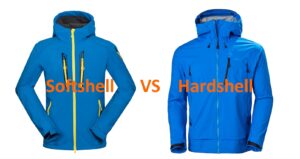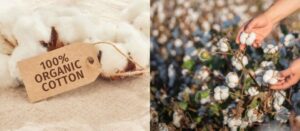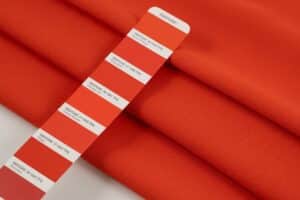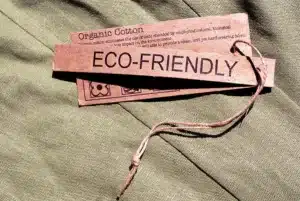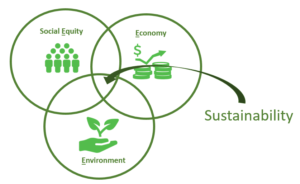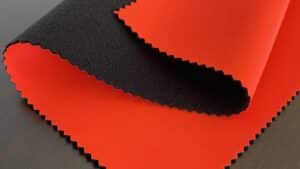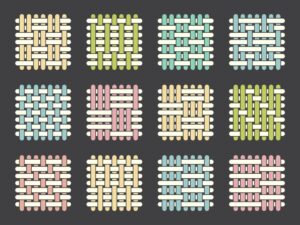
Choosing the right fabric for hoodies & sweatshirts plays a vital role in creating high-quality garments. The fabric determines how comfortable, durable, and functional the final product will be. Customers often judge hoodies based on how they feel and how long they last. Additionally, fabric for hoodies & sweatshirts impacts pricing, design, and sustainability, all of which influence customer satisfaction and brand loyalty. A thoughtful hoodie fabric guide ensures your products meet these expectations.
Key Takeaways
Pick soft fabrics like cotton for comfort. Soft fabrics feel nice on the skin.
Look for breathable and sweat-wicking fabrics. Polyester and merino wool keep you cool and dry.
Choose strong fabrics that pass quality tests. This makes hoodies last longer and look good.
Use stretchy fabrics for activewear. Blends with elastane help with movement and fit better.
Go for easy-to-care-for fabrics. Cotton-polyester blends are simple to wash and save time.
Match fabrics to what your audience needs. Different ages and lifestyles need different fabric types.
Think about weather when picking fabrics. Light fabrics are good for summer, heavy ones for winter.
Stay away from bad fabrics like silk or non-breathable ones. These can make customers unhappy and wear out faster.
1. Key Properties of Fabric for Hoodies & Sweatshirts

1.1 Softness and Comfort
Softness plays a critical role in how hoodies feel against your skin. You want fabrics that provide a cozy, gentle touch, ensuring maximum comfort for everyday wear. Cotton stands out as one of the softest materials, making it a popular choice for hoodies. Its natural fibers feel smooth and breathable, offering a luxurious experience. Organic cotton takes this a step further by being free from harsh chemicals, which can irritate sensitive skin.
Blended fabrics, such as cotton-polyester mixes, also deliver softness while improving durability. These blends balance comfort with practicality, making them ideal for casual and activewear hoodies. When selecting materials, prioritize those that maintain their softness even after multiple washes. This ensures your hoodies remain comfortable over time, enhancing customer satisfaction.
1.2 Breathability and Moisture-Wicking
Breathability determines how well a fabric allows air to circulate, keeping you cool and comfortable. Moisture-wicking, on the other hand, refers to a fabric's ability to draw sweat away from your skin, helping you stay dry. For hoodies, these properties are essential, especially for activewear or warm climates.
Some fabrics excel in breathability and moisture-wicking:
Polyester: Known for its excellent breathability, it keeps you cool but lacks moisture-wicking capabilities.
Merino Wool: Offers superior moisture management and odor resistance, making it perfect for activewear.
The table below highlights how common fabrics perform in these areas:
Fabric | Breathability | Moisture-Wicking | Pros | Cons |
|---|---|---|---|---|
Cotton | Moderate | No | Soft, durable, versatile | Absorbs moisture, poor for sweating |
Nylon | High | Yes | Wicks moisture, dries quickly | Not as soft, retains odor |
Polyester | High | Yes | Wicks moisture, dries quickly | Less breathable than natural fibers |
Rayon | Moderate | No | Silky feel, moderate breathability | Doesn't wick moisture well, wrinkles easily |
Linen | High | No | Excellent breathability, durable | Absorbs moisture, wrinkles easily |
Merino Wool | High | Yes | Breathes well, wicks moisture | Less durable than synthetics |
For hoodies, polyester and merino wool are excellent choices when moisture-wicking is a priority. Cotton, while breathable, absorbs moisture, making it less suitable for intense physical activities.
1.3 Durability and Longevity
Durability ensures your hoodies withstand daily wear and tear, while longevity guarantees they maintain their quality over time.
Abrasion Test: Measures how well a fabric resists rubbing, indicating its durability.
Pilling Test: Assesses the likelihood of small fiber balls forming, which can affect appearance.
Colorfastness Test: Determines how well a fabric retains its color after exposure to washing or sunlight.
Dimensional Stability Test: Evaluates how much a fabric changes in size or shape after washing or stretching.
Tensile Strength Test: Measures the force a fabric can endure before breaking.
For hoodies, cotton-polyester blends often strike the perfect balance between durability and comfort. Polyester adds strength, while cotton ensures softness.
1.4 Stretch and Flexibility
Stretch and flexibility are essential for hoodies, especially when designing activewear or casual garments that prioritize comfort. A fabric's ability to move with the wearer enhances functionality and ensures a better fit. When evaluating stretchy fabric for hoodies, consider several factors that contribute to its performance:
Elasticity: Elasticity measures how much a fabric can stretch and return to its original shape. This property is crucial for activewear hoodies, as it prevents sagging and maintains the garment's structure.
Drape: The way a fabric hangs or falls affects both comfort and style. Lightweight fabrics with good drape create a relaxed, stylish look, while heavier options may feel restrictive.
Anti-wrinkle: Fabrics that resist wrinkling are easier to maintain and look polished even after extended wear. This feature is particularly valuable for hoodies meant for travel or daily use.
Blended materials, such as cotton-polyester with elastane ( e.g. Spandex, Lycra) , often provide the perfect balance of stretch and durability. These blends combine the softness of cotton, the strength of polyester, and the elasticity of elastane. For example, a hoodie with a slight stretch offers a snug fit without feeling restrictive.
1.5 Ease of Maintenance
Ease of maintenance is another critical factor when selecting fabrics for hoodies. Customers value garments that are simple to care for and retain their quality after multiple washes. Low-maintenance fabrics save time and effort, making them more appealing to buyers.
Cotton is a popular choice for its straightforward care routine. It can withstand frequent washing and remains soft over time. However, pure cotton may shrink if not pre-treated, so blended options like cotton-polyester are often preferred. These blends resist shrinking and wrinkling, making them more durable and easier to handle.
Polyester stands out for its resilience. It dries quickly, resists wrinkles, and retains its shape even after heavy use. This makes it an excellent option for hoodies designed for active lifestyles.
Wool, while luxurious, requires more attention. It often needs hand washing or dry cleaning to maintain its texture and avoid damage.
To simplify maintenance, consider fabrics with stain-resistant or anti-pilling process. These treatments enhance durability and keep hoodies looking new for longer. Additionally, always provide clear care instructions on garment labels. This helps customers preserve the quality of their hoodies.
2. Options of Material Compositions
2.1 Cotton
2.1.1 Characteristics of Cotton
Cotton is one of the most widely used fabrics for hoodies due to its natural softness and breathability. It provides a comfortable feel against the skin, making it ideal for casual wear. Cotton absorbs moisture well, which helps keep you cool in warm weather. However, it lacks moisture-wicking properties, so it may not be the best choice for intense physical activities. For a premium option, 100% cotton hoodie fabric offers unmatched softness and a natural feel, though it may require extra care to prevent shrinking.
2.1.2 Organic Cotton
Organic cotton takes the benefits of traditional cotton a step further. It is grown without harmful synthetic chemicals, supporting a healthier ecosystem. Unlike conventional cotton, which relies heavily on pesticides and fertilizers that harm air, water, and soil, organic cotton prioritizes environmental sustainability. By choosing organic cotton, you contribute to reducing the environmental impact of apparel manufacturing while offering your customers a safer, chemical-free option.
2.1.3 Pros and Cons of Cotton
Pros:
Soft and breathable, ensuring comfort.
Hypoallergenic, suitable for sensitive skin.
Versatile, making it ideal for various hoodie styles.
Cons:
Prone to shrinking if not pre-treated.
Absorbs moisture, which can lead to discomfort during physical activities.
Requires more maintenance compared to synthetic fabrics.
2.2 Polyester
2.2.1 Characteristics of Polyester
Polyester is a synthetic fabric known for its durability and versatility. It resists shrinking, wrinkling, and tearing, making it a practical choice for hoodies. Polyester fleece, in particular, is lightweight yet warm, offering excellent insulation for colder weather. This fabric also wicks moisture away from the skin, keeping you dry during workouts or outdoor activities. Its quick-drying nature makes it a favorite for activewear hoodies.
2.2.2 Recycled Polyester
Recycled polyester is an eco-friendly material alternative to virgin polyester. It is made by repurposing plastic bottles and other waste materials, reducing landfill waste. Producing recycled polyester requires 59% less energy and generates 32% fewer greenhouse gas emissions compared to traditional polyester. By incorporating recycled polyester into your hoodies, you not only lower your environmental footprint but also appeal to eco-conscious customers.
Reduces landfill waste by recycling plastic bottles.
Requires fewer resources for production.
Lowers CO₂ emissions significantly.
Offers versatility for various hoodie designs.
2.2.3 Pros and Cons of Polyester
Advantage | Description |
|---|---|
Affordability | Polyester is made from abundant materials, making it cheaper than cotton, which is weather-dependent. |
Durability | Strong and resistant to tearing, polyester performs well in harsh conditions. |
Moisture Control | Wicks moisture away from the skin, enhancing comfort for athletes. |
Resists Shrinking/Wrinkling | Maintains shape and appearance after multiple washes, unlike many natural fibers. |
Cons:
Less breathable than natural fabrics like cotton.
Can retain odors if not washed properly.
Lacks the soft, natural feel of cotton.
2.3 Wool
2.3.1 Characteristics of Wool
Wool is a natural fiber celebrated for its excellent insulation properties. It traps body heat, keeping you warm in cold weather. Wool also wicks moisture away from the skin, ensuring you stay dry and comfortable. Its breathability allows for natural airflow, preventing overheating. These qualities make wool an excellent choice for hoodies designed for winter or outdoor use.
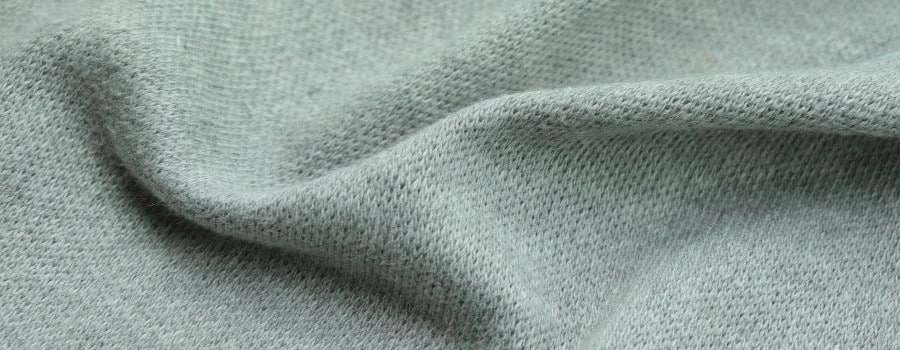
2.3.2 Pros and Cons of Wool
Pros:
Superior insulation for warmth in cold climates.
Moisture-wicking and breathable, enhancing comfort.
Natural and biodegradable, appealing to eco-conscious buyers.
Cons:
Requires special care, such as hand washing or dry cleaning.
Less durable than synthetic fabrics like polyester fleece.
Can feel itchy if not processed properly.
2.4 Material Blends
Blended fabrics combine the best qualities of different materials, making them a popular choice for hoodies. These blends enhance comfort, durability, and functionality, ensuring your hoodies meet customer expectations.
2.4.1 Common Blends (e.g., Cotton-Polyester)
Cotton and polyester blends are among the most widely used combinations in hoodie manufacturing. These blends balance the softness and breathability of cotton with the durability and wrinkle resistance of polyester. For example, the 50/50 cotton-polyester blend is a classic choice. It offers a soft feel, moderate breathability, and excellent durability, making it ideal for everyday hoodies. Another popular option is the 65/35 cotton-polyester ratio, which leans more toward durability while still maintaining comfort.
Blend | Comfort | Breathability | Durability | Customization |
|---|---|---|---|---|
50/25/25 Cotton-Polyester-Rayon | Ideal for summer wear, soft | Similar to 50/50 cotton-polyester | Less durable | Compatible with DTG printing |
70/27/3 Polyester-Cotton-Elastane | Better for winter, soft | Less breathable | More durable | Designed for sublimation printing |
2.4.2 Elastane Blends
Adding elastane ( e.g. Spandex, Lycra) to fabric blends brings stretch and flexibility, which are essential for activewear hoodies. Elastane, also known as spandex or Lycra, allows the fabric to stretch without losing its shape. A common blend for winter hoodies is 65/30/5 cotton-polyester-elastane. This combination provides warmth, durability, and a snug fit, making it perfect for cold-weather activities.
Elastane blends are also ideal for hoodies designed for physical activities. They allow freedom of movement while maintaining the garment's structure. These blends often work well with sublimation printing, enabling vibrant and long-lasting designs.
2.4.3 Pros and Cons of Blended Fabrics
Blended fabrics offer several advantages for hoodie manufacturing. They combine the strengths of different materials, creating versatile and durable garments. For instance:
Cotton provides comfort, absorbency, and breathability.
Polyester adds durability, wrinkle resistance, and affordability.
Blending these materials reduces fading and pilling, ensuring long-lasting hoodies.
However, blended fabrics also have some drawbacks. They may lack the natural feel of pure cotton or the luxurious warmth of wool.
By understanding the properties of different blends, you can choose the right fabric for your hoodies. Whether you prioritize comfort, durability, or customization, blended fabrics offer a range of options to suit your needs.
3. Options of Fabric Types
3.1 Fleece
3.1.1 Characteristics of Fleece
Fleece is a highly popular fabric for hoodies due to its unique properties. It provides warmth without adding bulk, making it ideal for colder weather. Here are some defining characteristics of fleece:
Warm and Cozy: Fleece traps body heat, offering excellent insulation.
Breathable Comfort: It allows air circulation and wicks moisture, keeping you dry.
Easy to Maintain: Machine washable and quick-drying, it retains its shape and softness after multiple washes.
Cost-Effective: Fleece is affordable and durable, making it a practical choice for manufacturers.
Vibrant Colors: It can be dyed in bright colors that remain vivid after washing.
Customizable: Fleece works well with various customization techniques, such as embroidery or screen printing.
Eco-Friendly Options: Many fleece fabrics are made from recycled materials, appealing to sustainability-conscious buyers.
These qualities make fleece a versatile option for hoodies, catering to a broad market with its comfort and practicality.
3.1.2 Fleece Brushed
Brushed fleece undergoes a process where the fabric's surface is brushed to create a soft, fluffy texture. This enhances its warmth and gives it a luxurious feel. Brushed fleece is perfect for winter hoodies, offering maximum comfort and insulation.
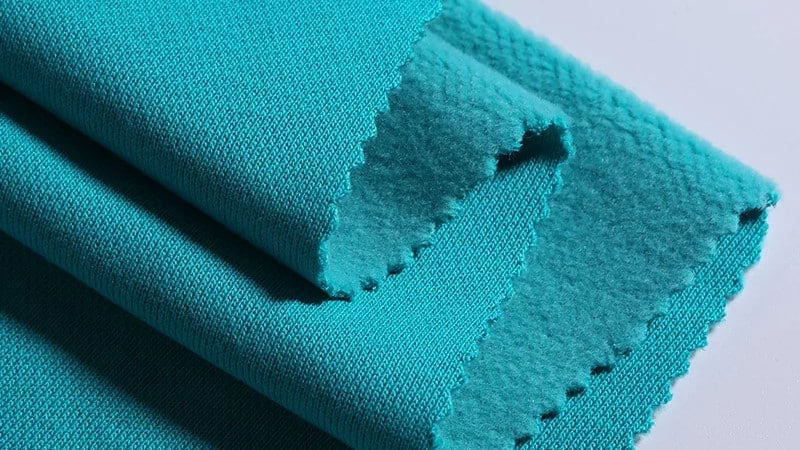
3.1.3 Micro Fleece
Micro fleece is a lightweight version of traditional fleece. It provides warmth without the bulk, making it suitable for layering or mild weather. Its thin structure ensures breathability while maintaining the cozy feel of fleece.
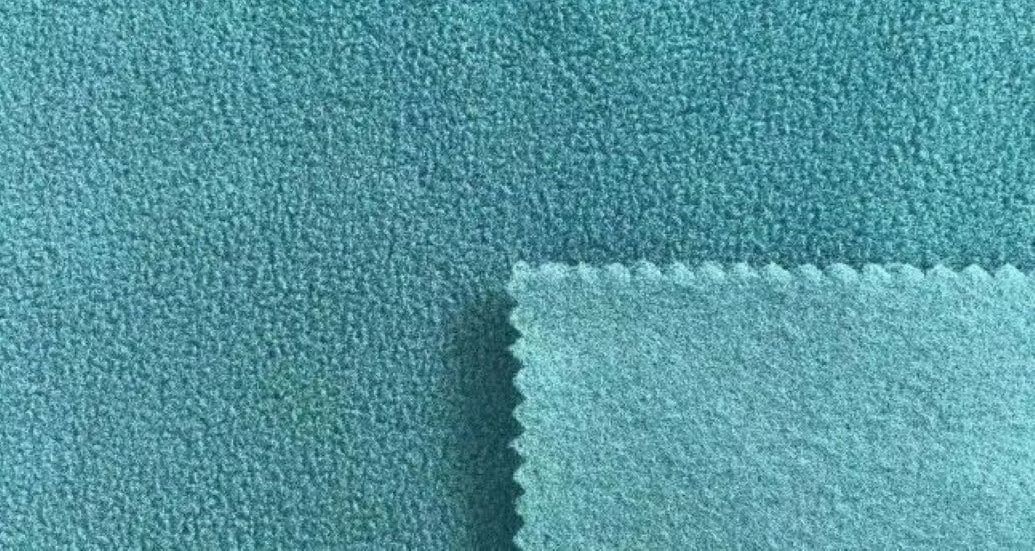
3.1.4 Sherpa Fleece
Sherpa fleece mimics the texture of sheep's wool, offering a plush and fluffy appearance. It is often used as a lining for hoodies, providing extra warmth and a stylish look. Sherpa fleece is a favorite for winter wear due to its superior insulation.
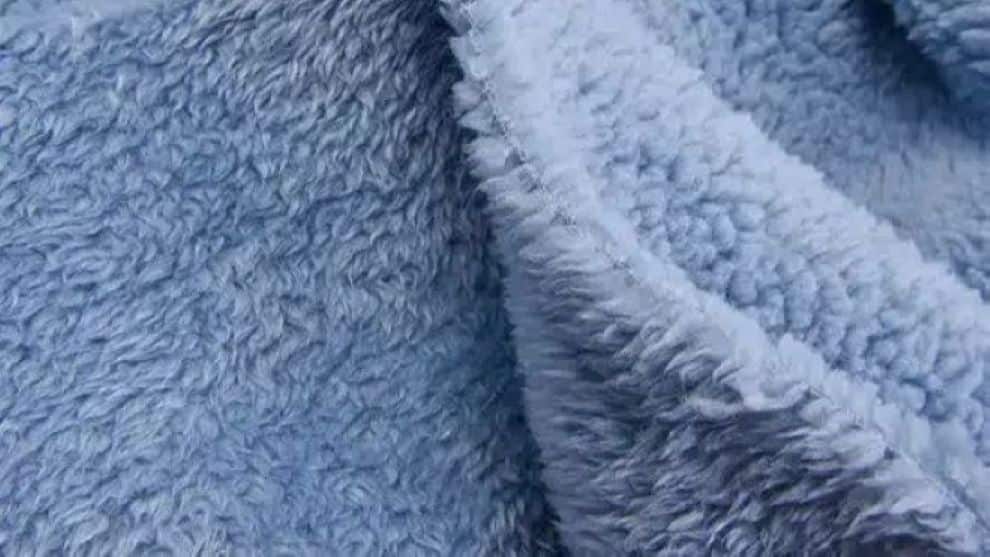
3.1.5 Pros and Cons of Fleece
Pros:
Lightweight yet warm, perfect for cold weather.
Durable and easy to care for, ensuring long-lasting hoodies.
Affordable and available in eco-friendly options.
Cons:
Less breathable than natural fabrics like cotton.
Can pill over time, affecting its appearance.
Retains odors if not washed properly.
3.2 French Terry
3.2.1 Characteristics of French Terry
French Terry fabric is a knit material with loops on one side and a smooth surface on the other. It is stretchable, breathable, and absorbent, making it a versatile choice for hoodies. This fabric works well for both casual and activewear, offering comfort in various weather conditions.

3.2.2 Pros and Cons of French Terry
Pros:
Soft and breathable, ensuring comfort throughout the day.
Absorbent, making it suitable for light workouts or warm weather.
Durable and easy to maintain, retaining its quality after multiple washes.
Cons:
Less insulating than fleece, limiting its use in colder climates.
May shrink if not pre-treated or washed correctly.
3.3 Jersey Knit
3.3.1 Characteristics of Jersey Knit
Jersey knit is a lightweight and stretchy fabric commonly used for hoodies and T-shirts. It features a smooth surface. This fabric offers excellent breathability and a relaxed drape, making it ideal for casual hoodies. Its stretchability ensures a comfortable fit, while its softness enhances the overall feel of the garment.
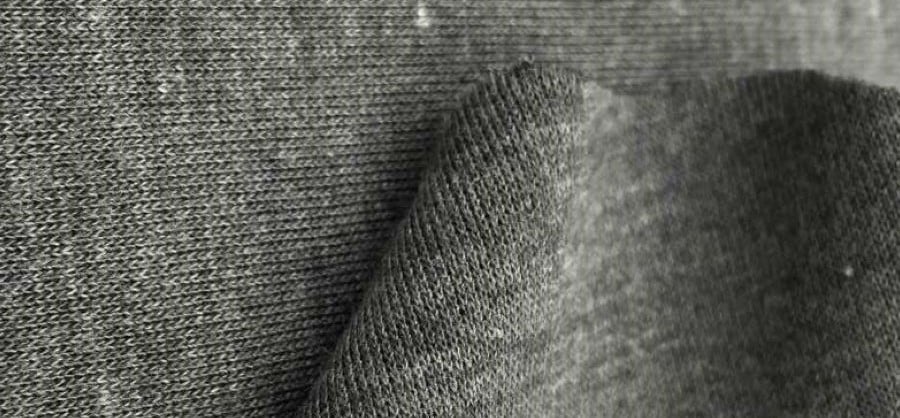
3.3.2 Pros and Cons of Jersey Knit
Pros:
Lightweight and breathable, perfect for layering or mild weather.
Stretchy and soft, providing a snug yet comfortable fit.
Easy to care for, with good resistance to wrinkles.
Cons:
Less durable than heavier fabrics like fleece.
Limited insulation, making it unsuitable for cold weather.
By understanding the unique properties of these fabrics, you can select the best options for your hoodies. Whether you prioritize warmth, breathability, or versatility, each fabric type offers distinct advantages to meet your needs.
3.4 Corduroy
3.4.1 Characteristics of Corduroy
Corduroy is a unique fabric with a ribbed texture, created by weaving twisted fibers into parallel lines called "wales." This gives it a soft, durable, and cozy feel, making it great for leisurewear and colder seasons. It’s breathable, provides good insulation, and is long-lasting, ideal for winter hoodies or casual wear.
However, corduroy has some drawbacks. Its textured surface can tear under heavy stress, making it less suitable for intense activities. It’s also heavier than lighter fabrics like jersey knit, which may not appeal to everyone.
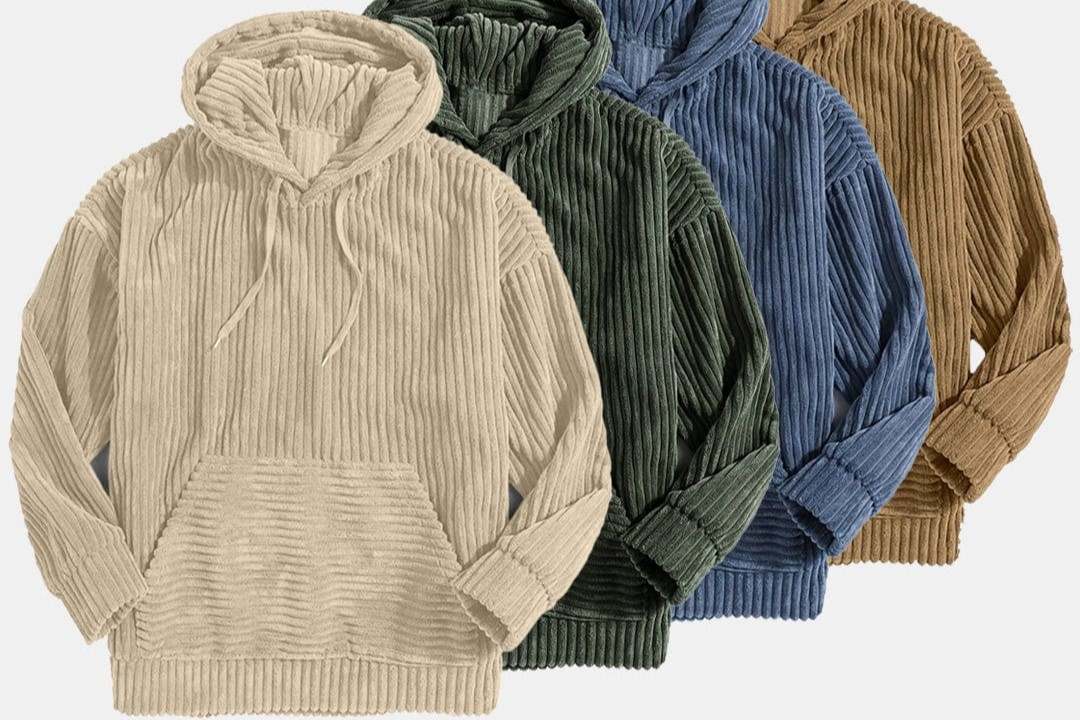
3.4.2 Pros and Cons of Corduroy
Pros:
Durability: Corduroy’s strength ensures your hoodies can handle everyday use without wearing out quickly.
Warmth: Its insulating properties make it perfect for colder climates.
Breathability: Despite its thickness, corduroy allows air to flow, keeping you comfortable.
Aesthetic Appeal: The ribbed texture adds a stylish and vintage touch to hoodies.
Cons:
Prone to Tearing: The fabric’s raised texture can make it vulnerable to damage in high-stress situations.
Heaviness: Corduroy’s weight may feel bulky, especially for those who prefer lightweight hoodies.
Maintenance: The textured surface can attract lint and dust, requiring more frequent cleaning.
Corduroy offers a balance of style, warmth, and durability, making it a great choice for hoodies aimed at casual or winter wear.
4. Fabric Weight and Its Impact on Hoodies
The weight of fabrics plays a significant role in determining the functionality and appeal of hoodies. It affects their warmth, breathability, and versatility, making it essential to choose the right weight for your designs. Lightweight, midweight, and heavyweight fabrics each offer unique benefits, catering to different seasons and customer needs.
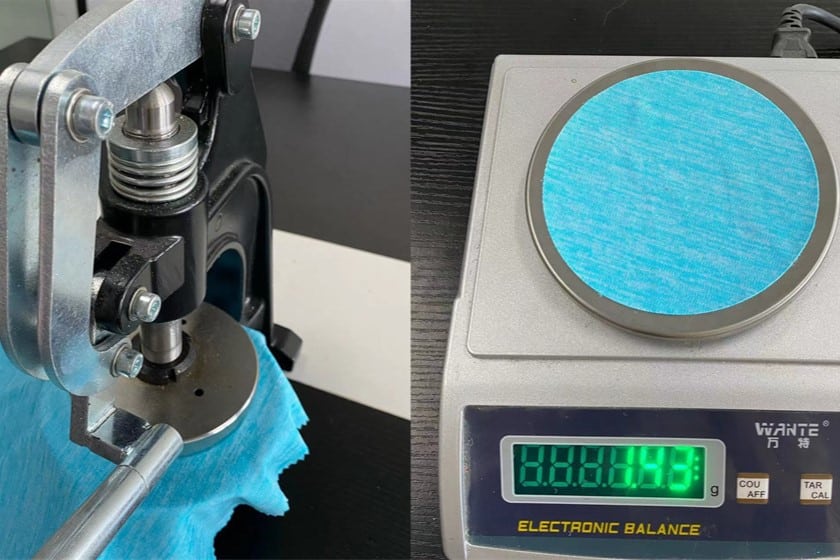
4.1 Lightweight Fabrics
4.1.1 Best Uses for Lightweight Hoodies
Lightweight fabrics are perfect for creating hoodies that provide comfort without adding bulk. These fabrics excel in warmer months or during mild weather. They offer:
Warmth without overheating, making them ideal for cooler evenings or air-conditioned spaces.
Flexibility and ease of movement, which are great for active individuals.
Versatility for layering under heavier jackets, ensuring comfort without restricting mobility.
4.1.2 Seasonal Considerations
Lightweight hoodies work best in spring and summer. Their breathability allows air to circulate, keeping you cool and comfortable in warmer climates. These fabrics also dry quickly, making them suitable for light outdoor activities or travel. By choosing lightweight options, you can create hoodies that cater to customers seeking comfort and practicality during transitional seasons.
4.2 Midweight Fabrics
4.2.1 Versatility of Midweight Options
Midweight fabrics, typically ranging from 250 GSM to 340 GSM, strike a balance between warmth and breathability. These fabrics are ideal for cooler days and transitional weather, such as autumn or early spring. They provide enough insulation to keep you warm without feeling heavy, making them suitable for year-round wear. Midweight hoodies are versatile and can be styled for both casual and semi-active use.
4.2.2 Balancing Comfort and Durability
Midweight fabrics offer a perfect blend of comfort and durability. They feel soft against the skin while maintaining their structure after repeated washes. This makes them a reliable choice for everyday hoodies. Additionally, midweight options are less prone to pilling or shrinking, ensuring your garments retain their quality over time. By selecting midweight fabrics, you can create hoodies that appeal to a broad audience.
4.3 Heavyweight Fabrics
4.3.1 Ideal Uses for Heavyweight Hoodies
Heavyweight fabrics, ranging from 350 GSM to 400+ GSM, are designed for colder weather. These fabrics provide substantial warmth, making them ideal for winter hoodies. Extra heavyweight options, exceeding 400 GSM, act like personal heaters, trapping heat effectively. These hoodies are perfect for outdoor activities in freezing temperatures or for customers seeking maximum comfort during winter.
4.3.2 Warmth and Insulation Properties
The thermal properties of heavyweight fabrics make them stand out. They trap body heat, ensuring you stay warm even in harsh conditions. These fabrics also offer excellent insulation, preventing cold air from penetrating the garment. While heavyweight hoodies provide unmatched warmth, they remain breathable enough to prevent overheating. By using heavyweight fabrics, you can create hoodies that prioritize warmth and durability for winter wear.
5. Unsuitable Fabrics for Hoodies & Sweatshirts
Not all fabrics are suitable for hoodies and sweatshirts. Some materials fail to meet the essential requirements of comfort, durability, and functionality. Choosing the wrong fabric can lead to customer dissatisfaction and a shorter lifespan for your products. Below are some fabric types you should avoid when designing hoodies.
5.1 Non-Breathable Fabrics
Breathability is a key factor in ensuring comfort, especially for hoodies worn during physical activities or in warmer climates. Non-breathable fabrics trap heat and moisture, leaving the wearer feeling hot and uncomfortable. For example, vinyl and certain types of coated polyester lack proper airflow. These materials create a barrier that prevents sweat from evaporating, leading to a sticky and unpleasant experience.
When selecting fabrics, prioritize those that allow air circulation. Breathable options like cotton or blends with moisture-wicking properties perform better. Avoid non-breathable fabrics unless the hoodie is specifically designed for extreme weather protection, such as rain gear.
5.2 Fabrics Prone to Pilling or Shrinking
Pilling and shrinking are common issues that reduce the quality and appearance of hoodies. Pilling occurs when small balls of fiber form on the fabric surface due to friction. Materials like low-quality polyester or acrylic are more prone to this problem. Hoodies made from such fabrics may look worn out after just a few uses, disappointing your customers.
Shrinking, on the other hand, happens when fabrics like untreated cotton or wool contract after washing. This can distort the hoodie’s fit and make it unwearable. To avoid these issues, choose pre-treated or blended fabrics that resist pilling and shrinking. High-quality cotton-polyester blends, for instance, maintain their shape and appearance over time.
5.3 Materials with Poor Durability
Durability is crucial for hoodies, as they often endure frequent washing and daily wear. Fabrics with poor durability tear easily, fade quickly, or lose their structure after minimal use. Thin, low-grade materials like rayon or loosely woven knits lack the strength needed for long-lasting garments.
To ensure durability, test fabrics for tensile strength and abrasion resistance. Opt for materials like polyester blends or fleece, which withstand wear and tear while maintaining their quality.
5.4 Fabrics That Are Difficult to Maintain
Some fabrics require extra care and attention, making them less practical for hoodies. These materials may demand special washing techniques, frequent ironing, or delicate handling. When selecting fabrics, you should consider how much effort your customers are willing to invest in maintaining their garments.
5.4.1 Silk
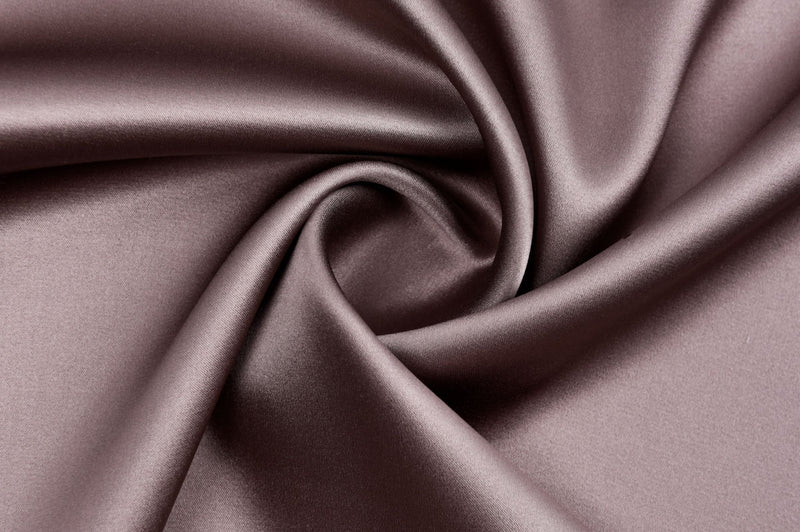
Silk is a luxurious fabric, but it is one of the most challenging to maintain. It requires hand washing or dry cleaning to preserve its delicate fibers. Even small mistakes, like using the wrong detergent or exposing it to direct sunlight, can damage the material. Silk also wrinkles easily, which means frequent ironing is necessary. While it feels smooth and lightweight, its high-maintenance nature makes it unsuitable for everyday hoodies.
5.4.2 Wool

Wool offers excellent warmth and insulation, but it demands careful handling. Washing wool in hot water or using a standard washing machine can cause it to shrink or lose its shape. Many wool garments require hand washing or dry cleaning, which adds to the maintenance effort. Additionally, wool is prone to pilling, especially in areas that experience friction. If you choose wool for hoodies, you must provide clear care instructions to help customers avoid damaging the fabric.
5.4.3 Linen

Linen is known for its breathability, but it wrinkles and creases easily. This fabric often requires ironing after every wash to maintain a polished appearance. Linen also absorbs stains quickly, making it harder to clean. While it works well for lightweight garments, its high-maintenance nature makes it less practical for hoodies designed for casual or active use.
5.4.4 Rayon
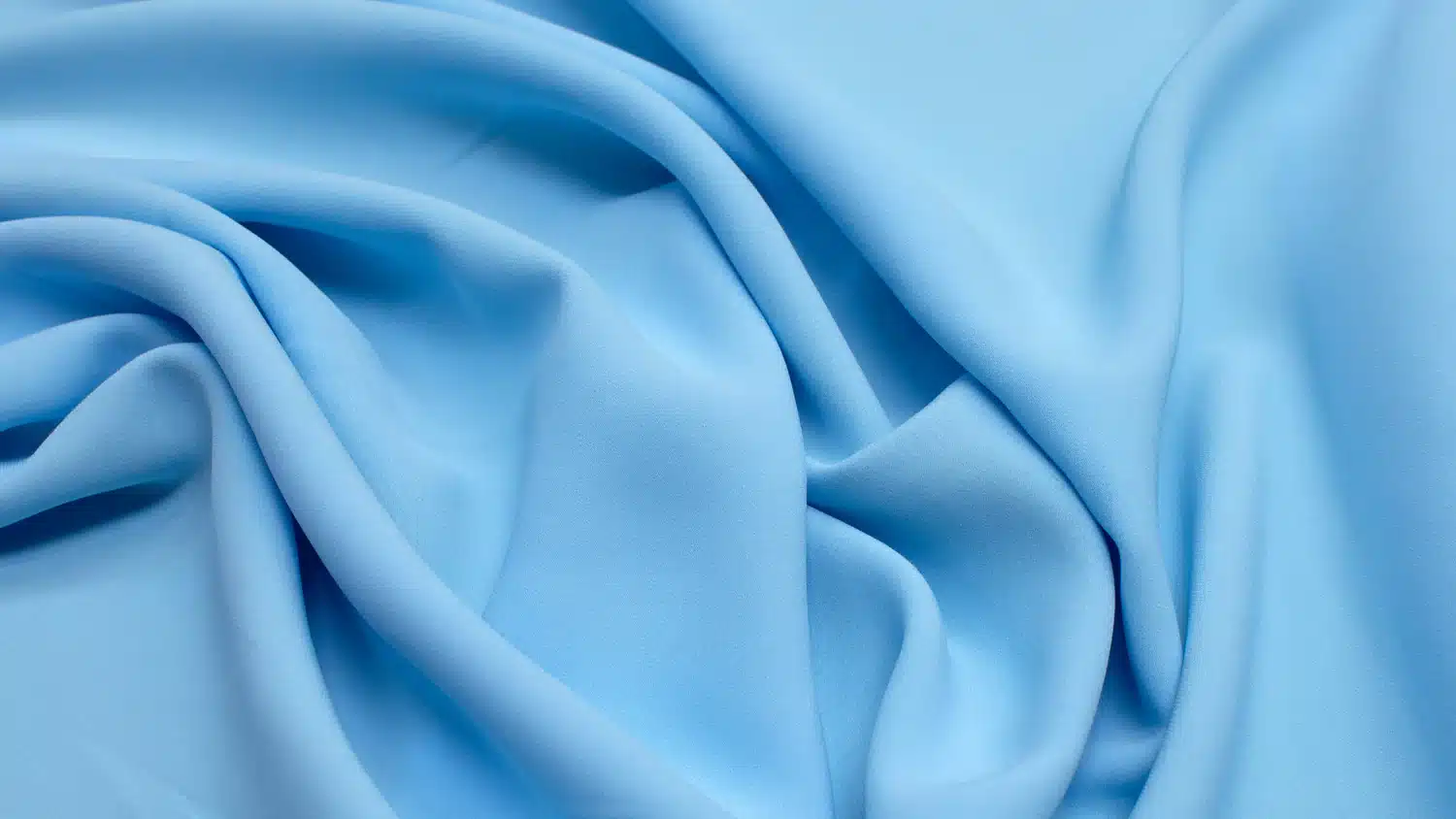
Rayon is another fabric that poses maintenance challenges. It is prone to shrinking, wrinkling, and losing its shape after washing. Rayon also weakens when wet, which increases the risk of tearing during cleaning. To preserve its quality, you need to wash rayon garments in cold water and avoid using a dryer. These requirements make rayon less appealing for customers seeking low-maintenance hoodies.
5.4.5 Velvet

Velvet adds a touch of luxury to garments, but it is difficult to care for. This fabric attracts dust and lint, requiring frequent cleaning to maintain its appearance. Velvet also needs special washing techniques, such as dry cleaning, to avoid crushing its pile. Its delicate nature makes it unsuitable for hoodies intended for everyday wear.
When choosing fabrics for hoodies, prioritize options that balance quality with ease of maintenance. High-maintenance fabrics may deter customers who prefer simple care routines. By selecting practical materials, you can create hoodies that fit seamlessly into your customers' lifestyles.
6. Tips for Designer on Choosing the Best Hoodie Materials
6.1 Consider the Target Audience
6.1.1 Age, Lifestyle, and Preferences
When choosing fabrics for hoodies, it’s important to know your target audience. Different age groups have different needs: kids often need soft, hypoallergenic materials like organic cotton, while teens and young adults might prefer trendy, lightweight fabrics for layering. Adults, especially in cold areas, may prioritize warmth and durability, making fleece or wool blends a good option.
Lifestyle also matters. Active people might prefer moisture-wicking fabrics like polyester blends for workouts, while those looking for casual wear may prioritize comfort and breathability. Consider factors like texture, weight, and ease of care to match your audience’s preferences.
6.2 Factor in Climate and Seasonality
6.2.1 Warm vs. Cold Weather Needs
Climate and seasonality significantly influence fabric choices for hoodies. For colder weather, insulation materials like fleece and wool provide excellent warmth. These fabrics trap body heat, making them ideal for winter wear. In contrast, breathable options like organic cotton work better for warmer seasons. They allow air circulation, keeping you cool and comfortable.
Here are some fabric recommendations based on climate:
Fleece or wool for cold weather, offering superior insulation.
Lightweight, breathable fabrics like organic cotton for spring and summer.
Polyester blends for durability and moisture-wicking in cooler climates.
6.3 Align with Intended Use
6.3.1 Casual Wear vs. Activewear
The best fabric for a hoodie depends on its purpose. For casual wear, focus on comfort and style with soft materials like cotton or cotton-polyester blends, which are great for everyday use and easy to customize.
For activewear, choose performance fabrics like polyester blends, which wick moisture and dry quickly. Adding elastane improves stretch and flexibility, making them ideal for physical activities. Outdoor enthusiasts might prefer fleece-lined hoodies for extra warmth and breathability.
Picking the right fabric based on the hoodie’s use ensures it meets customer needs and performs well, whether for casual or active lifestyles.
6.4 Balance Cost and Quality
6.4.1 Budget-Friendly Options Without Compromising Quality
Balancing cost and quality is essential when selecting fabrics for hoodies. You want to create garments that meet customer expectations without exceeding your budget. When choosing cost-effective fabrics, consider farbics made from synthetic fibers:
Polyester: This fabric is durable, wrinkle-resistant, and easy to maintain. It mimics the appearance of more expensive materials, making it a practical choice for hoodies. It is one of the most versatile and budget-friendly fabrics. It resists shrinking and fading, ensuring your hoodies maintain their quality over time.
To maximize value, focus on fabrics that balance affordability with performance. Polyester blends, for example, combine the softness of natural fibers with the durability of synthetics. These blends reduce production costs while ensuring your hoodies remain comfortable and long-lasting. By selecting the right materials, you can create high-quality hoodies that appeal to budget-conscious customers.
Selecting the right fabric for hoodies is essential for creating garments that meet customer expectations. The balance between comfort, durability, functionality and cost ensures your products stand out in a competitive market.
FAQ
What is the best fabric for hoodies?
The best fabric depends on the purpose. Cotton offers softness and breathability for casual wear. Polyester provides durability and moisture-wicking for activewear. Blended fabrics combine the strengths of both, making them versatile for various uses.
How do I choose the right fabric weight for a hoodie?
Consider the season and intended use. Lightweight fabrics suit warmer weather or layering. Midweight options balance comfort and durability for year-round wear. Heavyweight fabrics provide warmth and insulation for winter.
Are blended fabrics better than pure fabrics for hoodies?
Blended fabrics often outperform pure fabrics in durability and functionality. For example, cotton-polyester blends combine softness with strength. They resist shrinking and pilling, making them ideal for long-lasting hoodies.
What fabrics are best for activewear hoodies?
Polyester and polyester blends excel for activewear. They wick moisture, dry quickly, and resist wrinkles. Adding elastane enhances stretch and flexibility, ensuring comfort during physical activities.
Can I use fleece for summer hoodies?
Fleece is better suited for colder weather due to its insulating properties. For summer, lightweight fabrics like jersey knit or cotton blends work better. They provide breathability and comfort in warm conditions.
How do I maintain hoodies made from wool?
Wool hoodies require gentle care. Hand wash them in cold water or use a wool-specific detergent. Avoid wringing or twisting to prevent damage. Lay flat to dry to maintain their shape.
Are eco-friendly fabrics available for hoodies?
Yes, eco-friendly options like organic cotton and recycled polyester are available. These fabrics reduce environmental impact while offering comfort and durability. They appeal to customers seeking sustainable clothing choices.

